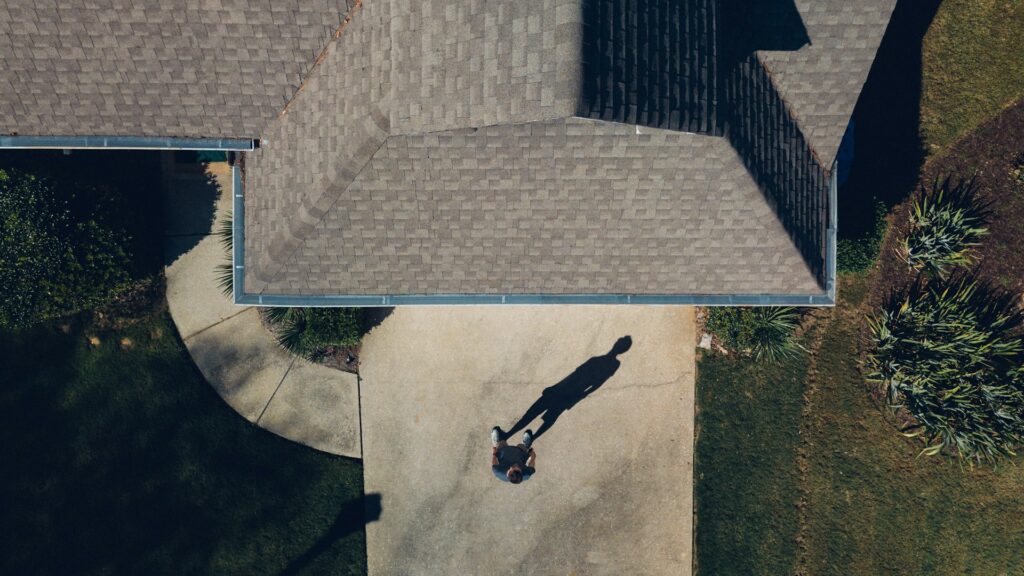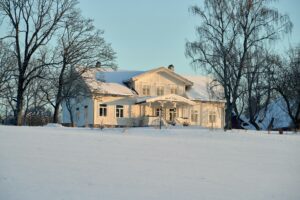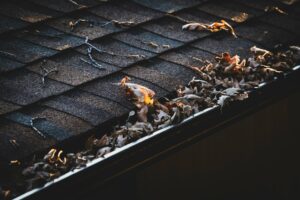When storms roll in off the Pacific Ocean and the mountains accumulate mounds of snow, Oregon’s diverse weather patterns can put any roofing system to the test. Homeowners across the state know these extremes create unique demands, especially when deciding between metal or shingle roofs. As you plan for the long haul, you deserve a solution that adapts fluidly to each new weather challenge.
Below, we compare key factors of both metal and shingle roofs so you can feel confident choosing the best approach for your home. Our insights remind us that roofing shouldn’t be a static decision made once and forgotten. Instead, it becomes an organically evolving part of your property, offering year-round protection through real-time adaptation to Oregon’s changing climate.
Understanding Oregon’s Weather
Oregon’s climate is famously varied. Along the coast, relentless storms and salty air frequently test the structural integrity of roofs. In the western valleys, seasonal heavy rains demand roofing materials with reliable moisture resistance. Meanwhile, the eastern region endures more temperature swings and occasional heavy snowfall.
This wide range of conditions underscores that selecting the right roof is more than aesthetics. Every Oregon homeowner knows the importance of seamless protection against wind, water, ice, and snow. When you dial in a roof that meets all these challenges, your home becomes an integrated system that harmoniously weathers years of shifting conditions.
Intense Storms and Wind
Winter tugs powerful storms across the state, and windy gusts near the coastline can top 70 mph during rough weather events. Further inland, windstorms still can rip shingles from the roof if they aren’t firmly installed or if the material can’t withstand extra lift forces. Metal roofs, with large continuous panels, often thrive under high winds and shed precipitation effortlessly. Still, certain well-installed shingles can also stand up to high wind speeds, provided they meet high wind-speed ratings.
Consistent maintenance ensures your roof truly performs in Oregon’s unpredictable gale conditions. Loose nails or compromised flashing offer small but significant vulnerabilities when battered by intensive storms. Addressing these minor details promptly can significantly protect your home’s roof from larger issues.
Snow and Ice in Higher Elevations
Winter snowfall isn’t exclusive to the Cascades—many parts of Oregon experience accumulations of ice and snow. These can weigh heavily on any roof, so it’s vital to consider:
- Load-bearing capacity: If the underlying structure is robust, metal and well-installed shingles can typically handle moderate snow loads. However, metal often allows snow to slide off efficiently, reducing buildup.
- Freeze-thaw cycles: Temperatures shift widely between day and night, creating ice dams. When water refreezes at the eaves, it can back up under shingles or between metal panels. Proper insulation and ventilation reduce the likelihood of ice dam formation.
- Slopes and drainage: Steeper roof slopes improve snow-shedding. However, even a shingle roof with the right pitch and careful maintenance can manage heavy accumulations.
A proactive approach to winter readiness keeps your roofing system working with natural flow and fluidity. You can adopt an annual inspection regimen, ensuring gutters remain clear, structural supports stay sound, and any problem sign is addressed long before they grow.
Why Oregon Homeowners Consider Metal Roofs
Metal roofs have become increasingly popular in regions that face punishing climate conditions. While they were once seen mostly on barns or industrial buildings, modern metal roofing now offers designs and finishes that beautifully complement residential styles.
Durability Over Time
Metal roofs are often praised for their incredible longevity. When installed correctly and maintained well, they can last 40 to 70 years—or even longer. This enduring lifespan stems partly from metal’s ability to resist rot, insects, and the structural issues plaguing wooden components. Their firm exterior surface also protects them from hail, wind, and flying debris.
Snow-Shedding Capability
In freezing, they now have ice straight off the roof. When installed correctly and maintained well, natural shedding can help mitigate heavy buildup that stresses the frame. Still, homeowners in specific neighborhoods might worry about snow sliding onto walkways or shrubbery. Adding snow guards provides more control over how quickly snow descends, ensuring you protect your landscaping and passersby.
Fire Resistance and Building Codes
Metal is naturally fire-resistant, which can be advantageous in areas with rising wildfire risk. Oregon’s unique combination of wooded regions and dry summer heat makes fire safety a crucial consideration. Many metal roofing options meet stringent Class A fire ratings, offering your home an added degree of protection.
Possible Drawbacks
- Initial expense: Metal roofs typically require a higher upfront investment. While this can be balanced by long-term performance, the initial budget can prove steep for some homeowners.
- Noise during storms: Heavy rain or hail can create noticeable noise, though proper insulation and underlayment often minimize this effect.
- Specialized installation: Not all roofing contractors are experienced with metal. Seek a specialized installer to ensure correct panel alignment, flashing, and fastener systems.
When your roof is installed by a professional with the proper certifications, you’re more likely to enjoy decades of reliable performance. Consider verifying contractor credentials through organizations like the Metal Roofing Alliance (https://www.metalroofing.com), which provides education and guidance.
Why Oregon Homeowners Consider Shingle Roofs
As a time-tested staple, shingle roofs still dominate many neighborhoods across Oregon. From classic three-tab designs to more advanced architectural styles, shingles offer a familiar look favored by many homeowners.
Budget-Friendly Options
Compared to metal, asphalt shingles tend to require less upfront investment. This affordability is often attractive to first-time homeowners or those managing larger renovation expenses. Shingles can be a perfectly viable choice for projects where the budget is tight but reliability is still paramount.
Straightforward Repairs: Homeowners can replace just the affected section if
If high winds dislodge a few shingles or freeze-thaw cycles cause minor damage, this targeted approach keeps maintenance costs reasonable. Because shingles are standard, replacement materials are easy to find, supporting a more straightforward, organic growth strategy for your roof—fix what needs fixing, keep the system strong.
Variety of Looks
While metal roofs have evolved in style, shingles still offer a distinctive dimensional appearance in various color palettes. Some laminate shingles mimic the look of cedar shakes or slate, letting homeowners achieve a polished aesthetic without sacrificing durability. These modern shingles harmoniously integrate with the community’s architectural identity in many neighborhoods.
Possible Drawbacks
- Lifespan: Standard asphalt shingles often need replacement after 20 to 25 years, though premium varieties can extend somewhat longer.
- Maintenance concerns: Hail, storm debris, and extreme temperature shifts might degrade shingles over time. Consistent upkeep is essential.
- Water infiltration risks: If water seeps under damaged shingles, moisture can accumulate in the roof decking. Regular inspections help detect issues before they escalate.
Insulation and Ventilation Considerations
Regardless of the roofing material you choose, insulation and ventilation play influential roles in performance. They are like the hidden scaffolding that balances everything, ensuring harmonious temperature control and moisture management integration. Adequate ventilation circulates air through the attic, preventing excessive heat buildup in summer and reducing ice dam formation in winter.
Similarly, a high-quality insulation strategy helps your roof maintain stable indoor temperatures, which lowers heating and cooling costs. For example, installing ridge vents and soffit vents can create a gentle air flow in the attic space, reducing condensation and prolonging roof life. Oregon’s damp climate can breed mold and rot if moisture isn’t vented away, so pay close attention to these often-overlooked details.
Maintenance and Lifespan
Roofing systems work best when adapted to their environment and consistently maintained. This process can feel like a real-time adaptation: each season reveals what your home needs to stay in peak condition.
- Regular inspections: A professional check in spring and fall helps you catch latent issues. Look for missing or cracked shingles, rust or corrosion on metal panels, and any signs of water infiltration.
- Gutter clearance: Overflowing gutters funnel water onto fascia boards, potentially seeping under the roof edge. Clean your gutters to ensure a smooth path for rain runoff.
- Moss and debris removal: In Oregon’s wet climate, moss grows quickly. It can trap moisture, leading to decay beneath shingles or metal roof fasteners.
Whether you have metal or shingles, consistent attention keeps your roof’s lifespan on track. This maintenance mindset represents organic growth at its finest—small, steady efforts that strengthen your overall home structure year after year.
Cost and Value
No two homes are alike; your budget likely influences whether you pick metal or shingles. Still, evaluating total cost should involve both the short-term outlay and the long-term return on investment. Shingles may be more affordable initially, but a metal roof’s longevity can become extremely appealing if you plan to stay in your home for decades.
- Upfront costs: Basic asphalt shingles run lower in immediate material and labor fees. Higher-end shingles and metal roofing command bigger initial budgets but can yield greater durability.
- Replacement cycles: Metal’s typical longevity may mean just one installation for the home’s life. Shingles, by contrast, might require multiple tear-offs over the same period.
- Energy efficiency: Metal roofs can reduce summer cooling expenses, especially with proper insulation and light-colored coatings. Some specialized shingles also reflect heat.
When planning your roofing investment, ask contractors for itemized estimates. Compare factors like materials, installation methods, warranties, and future maintenance. You can also consult resources from the Oregon Home Builders Association for practical tips on selecting reputable, local roofing professionals.
Environmental Considerations
Many homeowners aim to reduce their ecological footprint. Metal roofs can contain recycled content, and they are often 100% recyclable at the end of their lifespan. Certain shingle products also include materials, like fiberglass or recycled rubber, helping minimize raw resource use.
Additionally, Oregon’s rainy climate lends itself to rainwater catchment systems. Metal roofs can yield cleaner water runoff for landscaping or potting with the proper filtration. Though not as common for rainwater harvesting, shingles may still be suitable, depending on the product used and local regulations.
These environmental considerations fit neatly into an overall roofing strategy that values flow and fluidity. Water, heat, and resources can all be managed through integrated home decisions, reducing waste and maximizing harmony.
Selecting Your Roofing Partner
A key strategy for success is to find an experienced, trustworthy roofing professional. Each roof is unique; you’ll want someone who can tailor solutions to your climate conditions. Interview multiple contractors, check references, and confirm they carry the necessary licenses and insurance. Verify if they have experience with local building codes because Oregon regulations vary by county, especially regarding snow loads and wind resistance.
A dedicated partnership with a skilled contractor supports a more effortless, real-time adaptation to your home’s needs. As conditions change, you’ll have an expert to consult for ongoing upkeep or eventual upgrades.
Putting It All Together
Your roofing choice in Oregon is a dynamic line of defense, supporting your home’s comfort and safety amid varied weather patterns. Think of your roof as an ever-adaptable element that protects and evolves with your property. From preventing leaks during rainy seasons to enduring snowy, windy winters, you can count on your chosen roofing system when you’ve planned and maintained it well.
Metal roofing is durable and impressively long-lasting. It often requires minimal maintenance and provides noteworthy fire resistance. Shingles remain a robust and more affordable choice, offering design versatility and a time-tested track record of shielding Oregon homes.
The best solution ultimately depends on location, budget, and long-term vision. A metal roof’s long-lasting performance might become increasingly attractive if you anticipate staying put for decades. If you need a quicker, cost-effective fix, high-quality shingles offer an immediate solution with reliable results, provided you commit to a steady maintenance program.
Conclusion
Homeowners in every corner of Oregon face powerful weather events that test their roofs. You create a resilient shield that integrates seamlessly with your home’s structure by mindfully choosing between metal or shingles. It’s an organic growth strategy—forged by real-time adaptation and consistent care. With the right materials, a skilled contractor, and a willingness to nurture your roof through regular maintenance, you’ll welcome each new storm with calm assurance.Remember that small steps, taken year after year, safeguard your property’s value while providing daily comfort for you and your family. Roofing decisions might feel daunting, but investing in a system geared toward your home’s unique environment betters your odds against whatever the changing seasons bring. By doing so, you build a lasting legacy of warmth, shelter, and security under an Oregon sky—and that’s a decision you can truly stand on.




